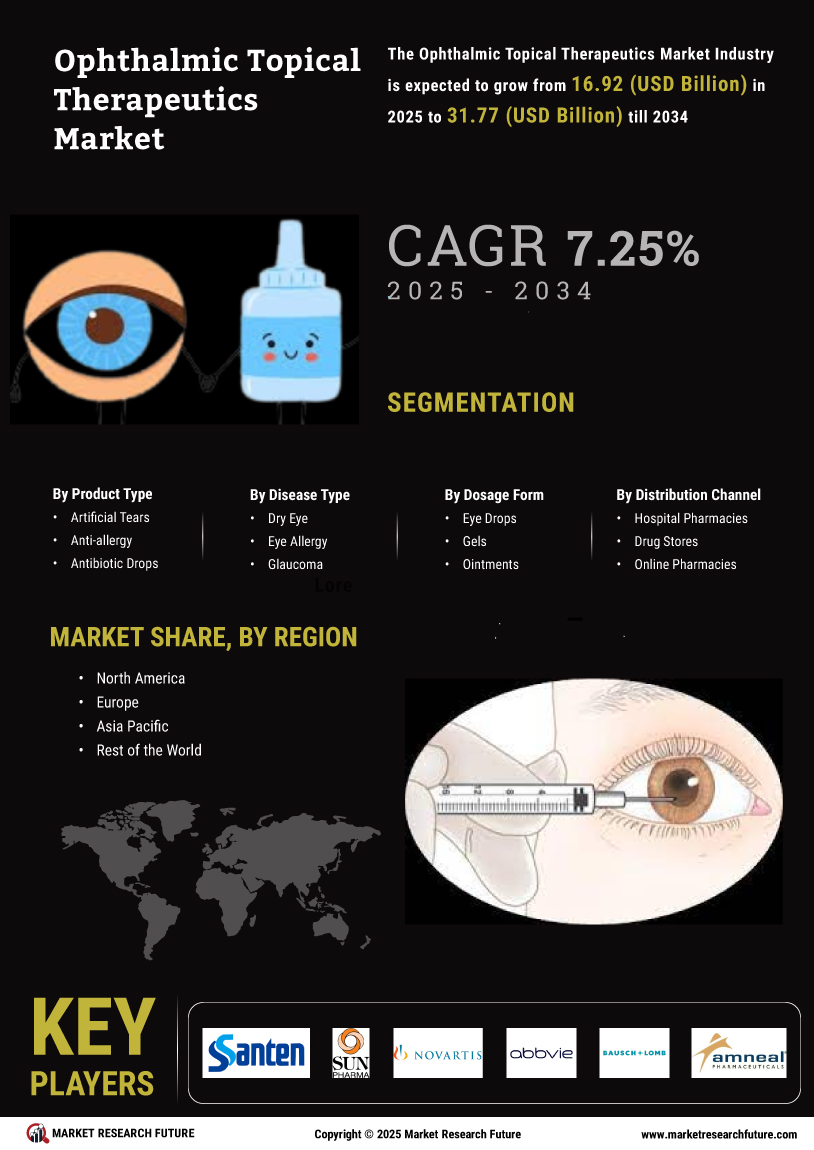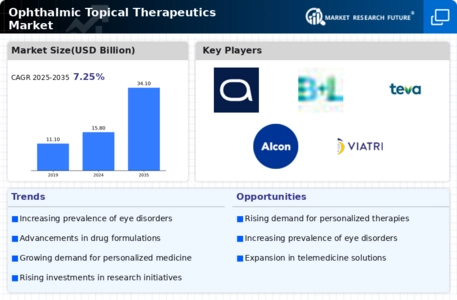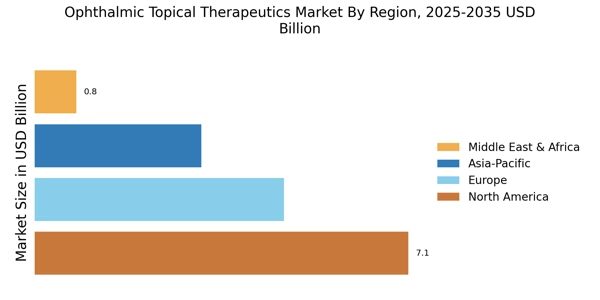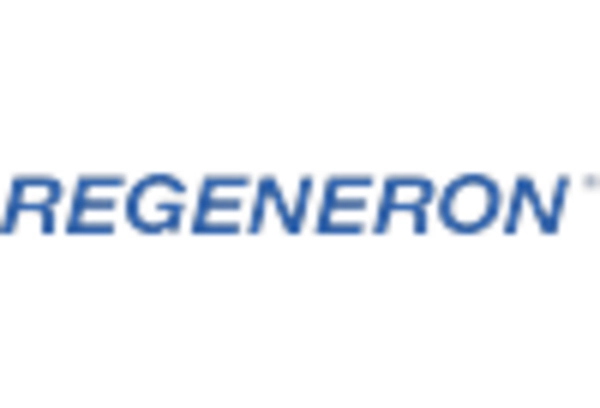Expansion of Distribution Channels
The expansion of distribution channels for ophthalmic products is playing a crucial role in the growth of the Ophthalmic Topical Therapeutics Market. With the rise of e-commerce and online pharmacies, patients now have greater access to a wide range of ophthalmic therapeutics. This shift in distribution not only enhances convenience for consumers but also allows for a broader reach of products, particularly in underserved regions. Additionally, partnerships between pharmaceutical companies and healthcare providers are facilitating better access to these therapies. As distribution networks continue to evolve, the market is likely to experience increased sales and a wider adoption of topical ophthalmic treatments.
Growing Prevalence of Eye Disorders
The increasing prevalence of eye disorders such as glaucoma, dry eye syndrome, and age-related macular degeneration is a primary driver of the Ophthalmic Topical Therapeutics Market. According to recent estimates, millions of individuals are affected by these conditions, leading to a heightened demand for effective therapeutic solutions. As the population ages, the incidence of these disorders is expected to rise, further propelling market growth. The need for innovative treatments that can be administered topically is becoming more pronounced, as patients seek convenient and effective options. This trend indicates a robust market potential for companies specializing in ophthalmic therapeutics, as they strive to develop new formulations and delivery systems that cater to the evolving needs of patients suffering from various eye conditions.
Rising Awareness and Education on Eye Health
There is a notable increase in awareness and education regarding eye health, which is contributing to the growth of the Ophthalmic Topical Therapeutics Market. Public health campaigns and initiatives by various organizations are emphasizing the importance of regular eye examinations and early intervention for eye disorders. This heightened awareness is leading to an increase in patient consultations and a subsequent rise in the demand for ophthalmic therapeutics. Furthermore, as patients become more informed about available treatment options, they are more likely to seek out effective topical therapies. This trend suggests a positive outlook for the market, as educated consumers drive demand for innovative and effective ophthalmic solutions.
Regulatory Support for Ophthalmic Innovations
Regulatory support for the development and approval of new ophthalmic therapies is a significant driver of the Ophthalmic Topical Therapeutics Market. Regulatory agencies are increasingly recognizing the need for innovative treatments to address the growing burden of eye diseases. Initiatives aimed at expediting the approval process for novel therapies are encouraging pharmaceutical companies to invest in research and development. This supportive regulatory environment is likely to foster innovation and bring new products to market more rapidly. As a result, the market is expected to benefit from a steady influx of new ophthalmic therapeutics, catering to the diverse needs of patients and healthcare providers.
Technological Advancements in Ophthalmic Formulations
Technological advancements in drug formulation and delivery systems are significantly influencing the Ophthalmic Topical Therapeutics Market. Innovations such as nanotechnology, sustained-release formulations, and smart delivery systems are enhancing the efficacy and safety of ophthalmic drugs. These advancements allow for improved bioavailability and patient compliance, as they reduce the frequency of administration and enhance therapeutic outcomes. The market is witnessing a surge in research and development activities aimed at creating novel formulations that can address unmet medical needs. As a result, pharmaceutical companies are increasingly investing in R&D to leverage these technologies, which is likely to drive the growth of the market in the coming years.


















Leave a Comment